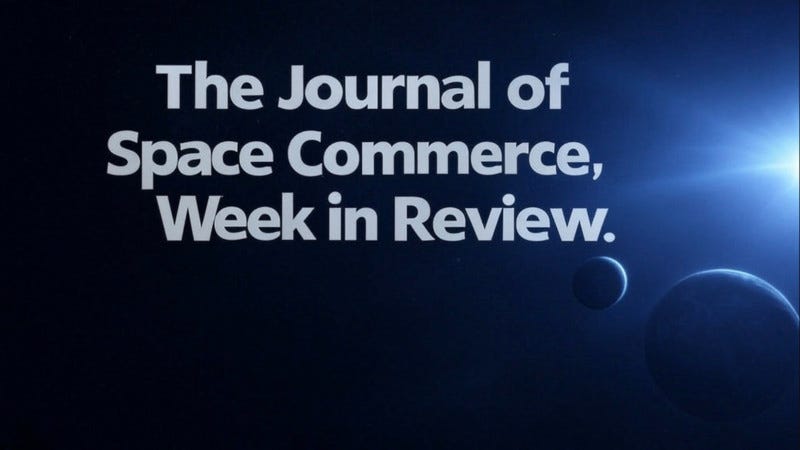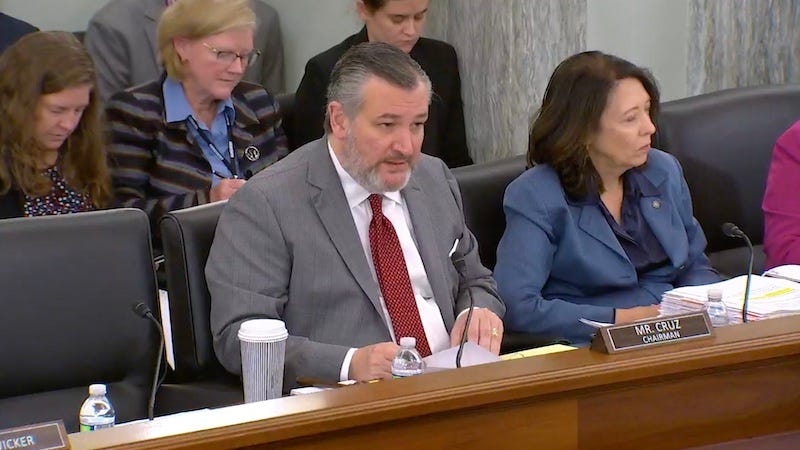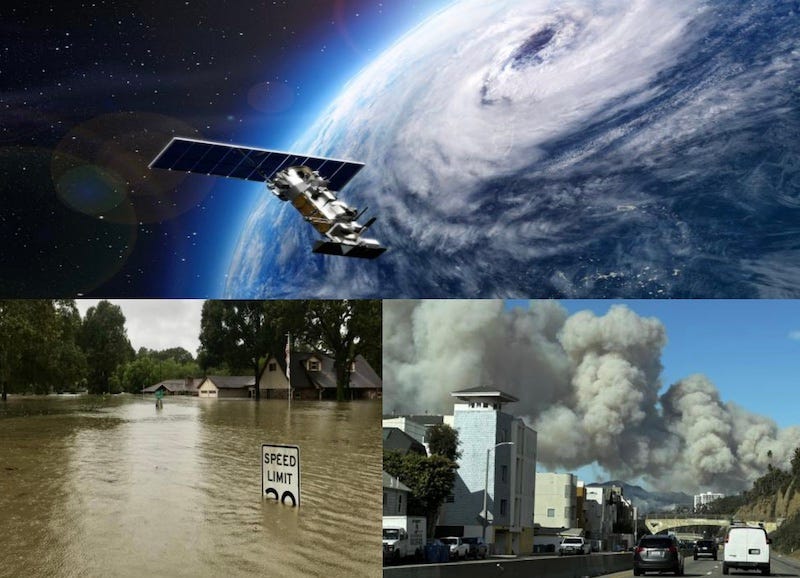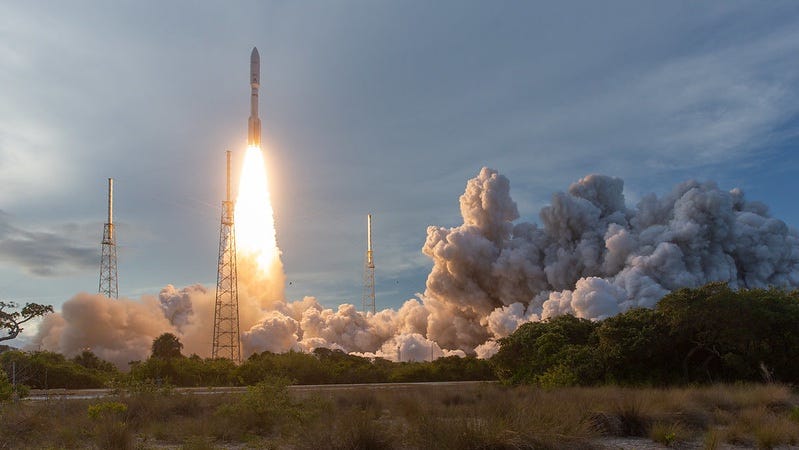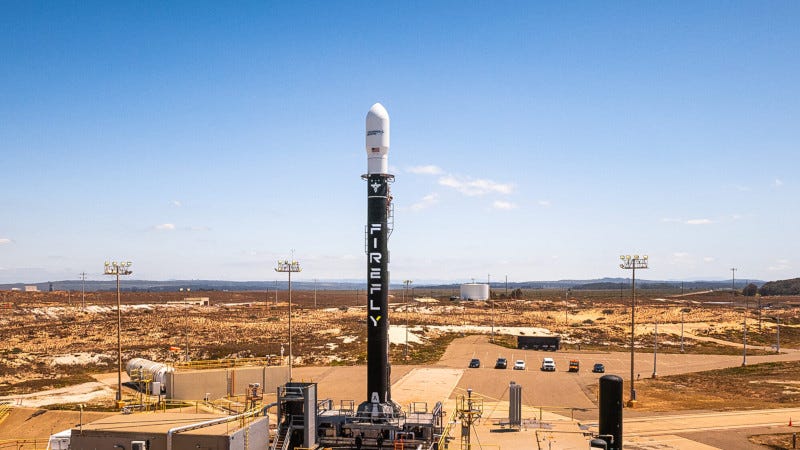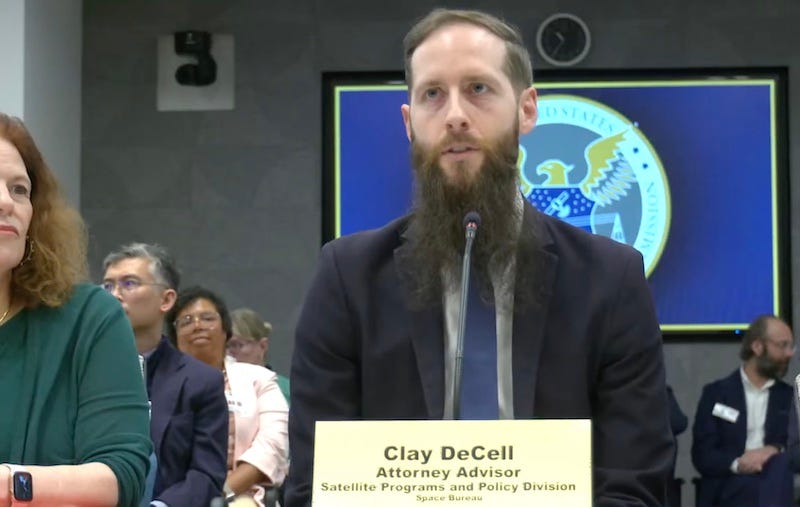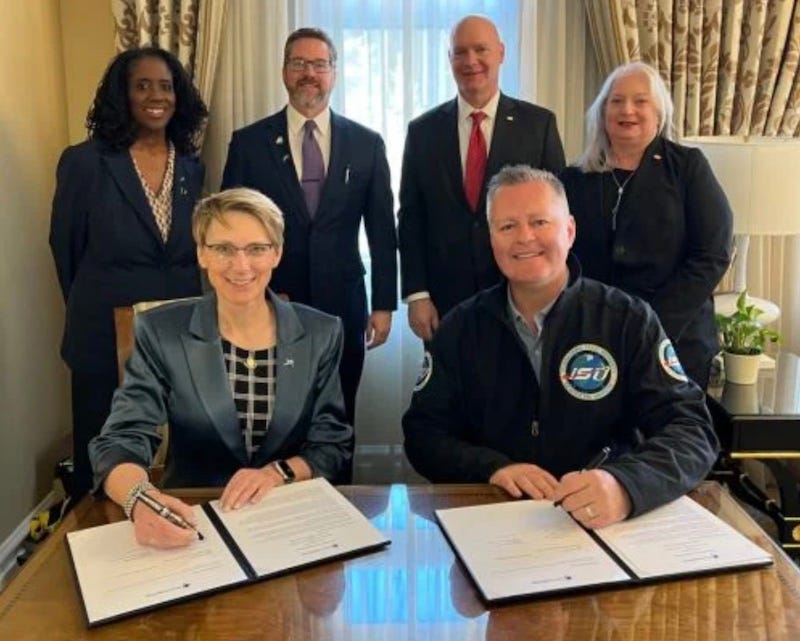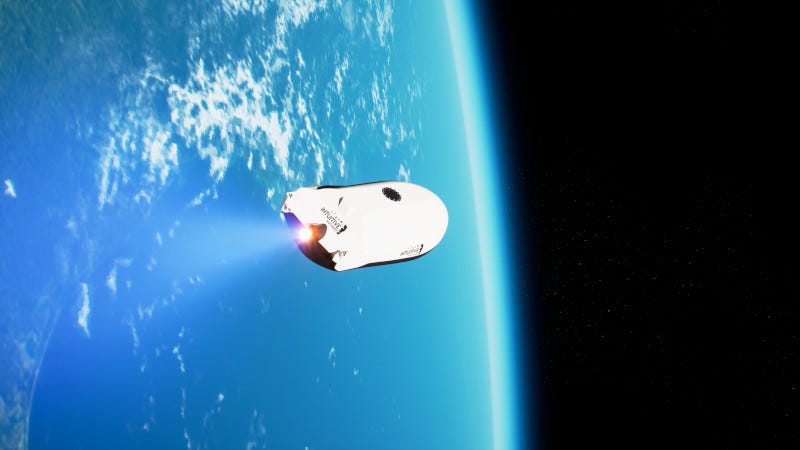Closing In on a NASA Administrator, and the Impact of the Space Economy. Here are some of the top stories from The Journal of Space Commerce this week.
The Senate Commerce Committee voted 19-9 on Wednesday to advance the nomination of Jared Isaacman to be the next administrator of NASA. The nomination now moves to the full senate for a final vote.
Isaacman, 42, has traveled to space on two occasions on private missions aboard SpaceX Dragon spacecraft, and conducted the first EVA to be performed by a non-NASA astronaut.
In making the case to move the nomination forward to the full senate, Committee Chairman Ted Cruz (R-TX), cited Mr. Isaacman's commitment to NASA's Artemis program and a return to the Moon.
"Existing law directs NASA to establish 'sustained human presence in cis-lunar space, or on the Moon.' Federal law explicitly calls the moon a 'stepping stone to reaching Mars.' In other words, our path to predominance in space begins with the Artemis missions."
If confirmed by the full senate, Isaacman will face budgetary challenges to advance the Artemis missions. And while NASA's SLS will carry the next humans into a lunar orbit, the agency is relying on the SpaceX Starship as a lunar lander, and that system has yet to achieve orbit.
Isaacman was not present for the vote.
-0-
With the Atlantic hurricane season beginning in less than six weeks, the Satellite Industry Association (SIA) is encouraging policy and lawmakers to continue considering the vital role satellites play in providing communications and other important services before, during and after a natural disaster. The Association summarized the various services satellites can provide both before and after an emergency, plus recent industry disaster response initiatives, in its newly updated SIA Report titled, “Natural Disasters – Satellites to the Rescue”.
SIA president Tom Stroup said that satellites provide critical links during natural disasters.
"We provide an opportunity for early response because our infrastructure is in space. And so when other systems go down, there is an ability to provide continuity of communications. In some instances it's for the first responders, they may have lost access to their communications systems, cell systems may have gone down, and there's an ability to provide communications. There's also the opportunity to be able to provide remote sensing information. Because again, there's an opportunity to be able to use optical imagery to be able to identify what roads are available, the level of damages. Even during the event, there's the opportunity to use other remote sensing techniques to be able to identify problems."
Stroup says for lawmakers and policymakers, advance planning is the key.
"You don't want to start trying to identify who has infrastructure, who the satellite providers are offering various kinds of service after the disaster has occurred. It is really reaching out to establish relationships and know what systems are going to be available in advance."
The Atlantic Hurricane Season runs for six months beginning on June 1st. Preliminary forecasts project a slightly above average number of named cyclones for 2025.
-0-
An Atlas V rocket carrying the Kuiper-1 mission for Amazon's Project Kuiper lifted off Monday from Cape Canaveral Space Force Station. The Kuiper 1 launch marks the beginning of full-scale deployment of the Kuiper constellation and a new chapter in the commercial launch industry as Amazon partners with United Launch Alliance (ULA) to deliver a majority of its advanced satellites in low-Earth orbit (LEO).
Project Kuiper will leverage the next-generation Vulcan rocket for 38 high-cadence, rapid-fire launches, positioning ULA to deliver more than half of the constellation's more than 3,200 satellites through the world's largest commercial launch agreement.
-0-
The news was not so good for Firefly Aerospace. Its Alpha rocket launching a demonstration payload for Lockheed Martin experienced an anomaly during launch Tuesday from Vandenberg Space Force Base in California, resulting in the loss of the payload, Lockheed Martin’s LM 400 tech demo.
According to the company, Firefly’s Alpha FLTA006 launch began with a nominal liftoff and progressed through first stage flight, reaching target separation velocity. The rocket then experienced a mishap between stage separation and second stage ignition that led to the loss of the Lightning engine nozzle extension, substantially reducing the engine’s thrust. That caused the upper stage to miss its orbital insertion. It reentered the atmosphere and landed in the Pacific Ocean.
Alpha FLTA006 is the second mission Firefly launched for Lockheed Martin and the first of Firefly’s multi-launch agreement with that company that includes up to 25 missions over the next five years.
The FAA said in a statement that it will be involved in every step of the mishap investigation process and must approve Firefly’s final report, including any corrective actions, before Alpha can return to fight.
-0-
Coming up, proposed changes to the government's rules for satellite operators, and the impact of the space economy on the nation's GDP. But right now, why not take a minute to become a paid subscriber to The Journal of Space Commerce. Whether you’re a space professional or enthusiast, paid subscribers have first access to premium articles and podcasts focused on the new space economy. Just visit www.exterrajsc.com on Substack, and help keep The Journal of Space Commerce independent as we chronicle, cajole and, when necessary, critique the commercial space industry.
-0-
The FCC Monday voted to move forward with a Notice of Proposed Rulemaking (NPRM) that would promote efficient spectrum sharing between geostationary and non-geostationary satellite systems.
To take account of today’s satellite technology and operations and to promote efficient co-existence and expanded services to American consumers, the commission is looking to review power limits developed in the 1990s for fixed-satellite service systems in non-geostationary satellite orbit, for the protection of geostationary satellite networks.
Clay DeCell is an FCC Space Bureau Attorney Advisor in the Satellite Programs and Policy Division of the agency.
"This Notice of Proposed Rulemaking would examine modern satellite technology and operations to address the single-most constraining regulatory requirement on broadband satellite systems today. It would take a fresh look at rules dating to the 1990s, that affect satellite systems in the most common spectrum bands for satellite broadband," DeCell said.
"Specifically, the notice would ask how satellite operations have changed in the 20-plus years since these rules were adopted. How current limits affect geostationary satellites and impact the services provided by non-geostationary satellites, and whether updated or alternative sharing frameworks would promote better efficiency to the benefit of American consumers."
The commission voted unanimously to proceed with publication of the NPRM in the Federal Register. Comments must be submitted within 45 days after that publication.
-0-
Through its strategic initiative Space Workforce for Tomorrow (SWFT), Space Foundation has entered into an agreement with International Space University (ISU) which aims to advance space education and address workforce needs across the United States space industry.
This strategic collaboration brings together Space Foundation’s national presence, SWFT’s focused mission to close the U.S. STEM talent gap, and ISU’s interdisciplinary expertise in space education to support the development of a diverse, skilled, and sustainable space workforce.
The MOU establishes a three-year framework for collaboration, emphasizing co-branded programming, national workforce development efforts, and shared resources to drive results across the space industry.
-0-
The Texas Space Commission has selected Intuitive Machines for a grant up to $10 million from the Space Exploration and Research Fund (“SEARF”). This funding supports the development of an Earth reentry vehicle and orbital fabrication lab designed to enable microgravity biomanufacturing, and is intended to serve as a critical risk-reduction platform for the company’s future lunar sample return missions.
In 2022, Intuitive Machines began initial development of the preliminary design for an Earth reentry vehicle capable of supporting missions returning from low Earth orbit, the Moon, or Mars. As this technology was refined, the company partnered with Rhodium Scientific for commercial microgravity biomanufacturing in space.
The 12-month SEARF phase one effort will assist in advancing the collaboration with Rhodium Scientific and will support spacecraft development through Critical Design Review and the creation of a full-scale ground prototype.
-0-
The Bureau of Economic Analysis (BEA) is a division of the U.S. Department of Commerce responsible for producing economic statistics that provide insight into the U.S. economy. In March, it released a significant revision and update to its Space Economy Satellite Account (SESA), offering detailed data from 2012 through 2023.
This week on The Ex Terra Podcast, I talked with BEA Economist Patrick Georgi about the latest data. He says there has been a significant shift in the contribution of the satellite television segment to the overall GDP over the past few years.
"I think one of the stronger trends that we've seen in this new time series has been the shrinking of the information sector as a share of total space economy GDP, which has primarily been driven by declines in the satellite television industry. We've kind of seen this happening for a few years now, and the decline seems to be strongest from about 2016 to 2022. But as of 2023 it looks like that slide has appeared to slow down,” Georgi said. “What we think is that during this time there has been a shift in demand from satellite television to more Earth-based streaming services. However, within the information sector, we are starting to notice an increase, a slight uptick in satellite Internet connections in the United States. So there's potentially room for that market to counter some of the declines within the satellite television industry."
According to the BEA, the Space Economy in 2023 contributed $240.9 billion to the overall U.S. GDP, and supported 373,000 jobs.
-0-
And those are some of the top stories we covered for you on The Journal of Space Commerce this week. You can get daily updates on space commerce by subscribing to The Journal of Space Commerce on Substack at www.exterrajsc.com. And please consider becoming a paid subscriber. Whether you’re a space professional or enthusiast, paid subscribers have first access to premium articles and podcasts focused on the new space economy. Just visit www.exterrajsc.com and help keep The Journal of Space Commerce independent as we chronicle, cajole and, when necessary, critique the commercial space industry.
Theme Stock Music Provided by Pond 5
You might have missed:
U.S. SATCOM Equipment Market Poised to Surge
Moon RACER Activates Self-Driving Mode
Orbital Power, Weather Monitoring Focus of Strategic Partnership
Colorado ONE Fund Invests in LEAP
AST SpaceMobile to Coordinate with National Science Foundation




